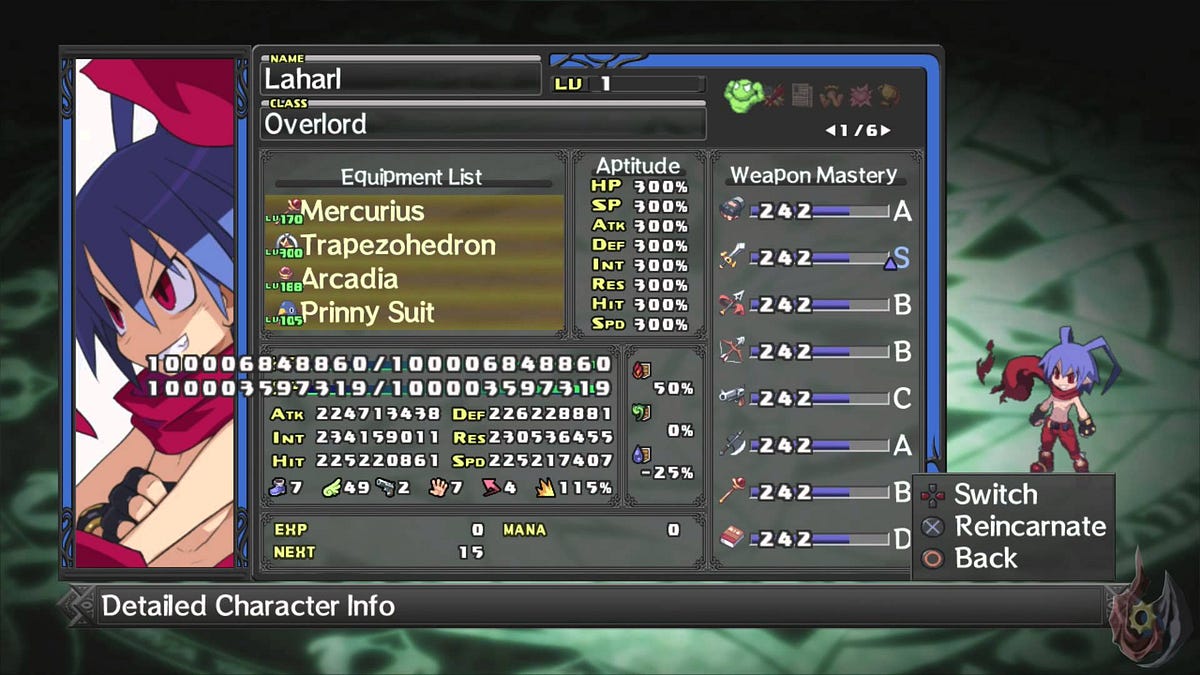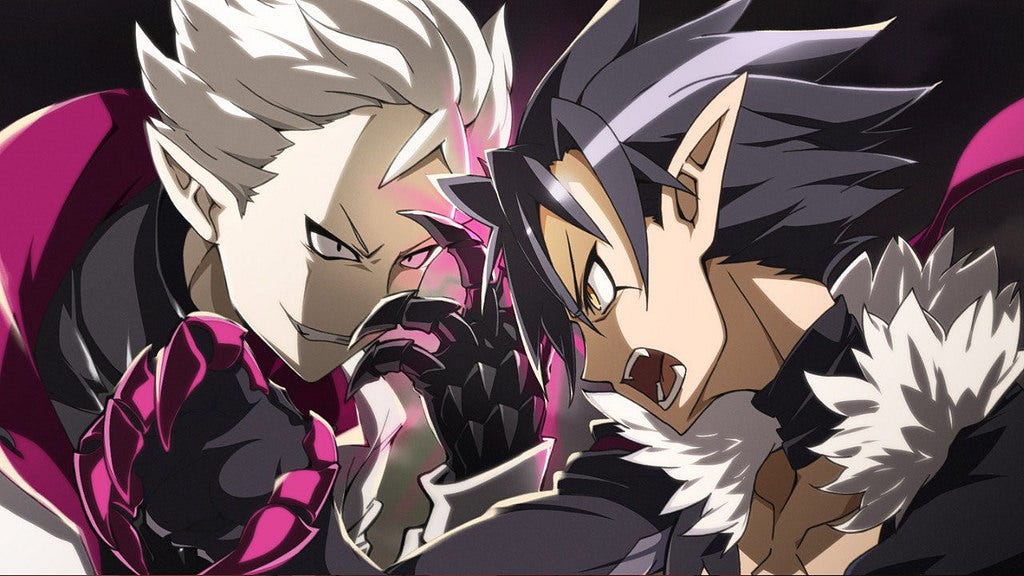Game Design Inspirations: Disgaea’s Damage in the Millions and Post Game Structure
Nippon Ichi’s Disgaea games have a unique hook that differentiates them from other tactical role playing games — Being able to power up your characters to deal millions, even BILLIONS of damage!

Hello and welcome to Game Design Inspirations! GDI is a weekly bite-sized nugget of brilliant game design, taken from the games that I play “for research purposes”.
Nippon Ichi’s Disgaea games have a unique hook that differentiates them from other tactical role playing games —

Disgaea 5 Complete by Nippon Ichi Software
Being able to power up your characters to deal millions, even BILLIONS of damage!
This has been a series staple ever since the first game, Disgaea: Hour of Darkness, came out on the Playstation 2 in 2003.
With each succeeding sequel, Nippon Ichi doubles down and ramps up the damage cap even more, adding new systems that enable the player to power up. The latest game in the series, Disgaea 5 Complete, has a dizzying multitude of power up systems — the item world, character world, reincarnation, evilities and magichange — all designed to allow the player to increase their character’s damage potential.
Other tactical role playing series like Fire Emblem meticulously balance their character stats and economy, keeping maximum values at double digits.
Disgaea eschews balance altogether, allowing players to go hog wild when leveling up their characters.
 This player powered up his character so much that the stats are going out of the frame!
This player powered up his character so much that the stats are going out of the frame!
With there being no ceiling to the character’s power, Disgaea’s story and game structure also had to change compared to standard tactical role playing games.
 One of the cutscenes of Disgaea 5 Complete. The story is driven through these cutscenes across several chapters
One of the cutscenes of Disgaea 5 Complete. The story is driven through these cutscenes across several chapters
Most role playing games will have the player go through the story in chapters. The main character becomes stronger as the story progresses, and then maxes out when they’re about to face the final boss of the game. Once the player has beaten the final boss, the story is resolved and the game is finished. The player moves on to the next game. (Or, maybe starts a New Game+).
Disgaea games also have the same structure at the start. The player goes through the chapters, and resolves the story after all the chapters are complete.
The game is hardly finished though. The meat of the gameplay in Disgaea actually occurs during the Post Game, or after the main story chapters are finished.
 The Cheat Shop, an essential system in the Post Game
The Cheat Shop, an essential system in the Post Game
While playing through the story chapters, the player will be able to go through several of the game’s systems, but will hardly touch some of the deeper ones.
A perfect example of this is the Cheat Shop, which allows the player to change the rate at which a character levels up. By tweaking several parameters, the player is able to making levels harder or reduce gains in other variables so that he can level up faster.
From here, the meta of the game changes more from finding the right tactics in a certain level to finding the right exploit in order to level up and overpower your opponents in the most efficient way possible.
While Disgaea’s story and game structure mostly works, I wonder if there’s a better way to restructure it more around the way the game is played.
The Pre Game is still designed in the same manner as a normal role playing game, with the story ending after the player has finished the story chapters. This is unfortunate, as I suspect that the main motivation of the majority of players is to be able to finish the game’s story. These players will stop playing once they reach this point, missing out on the other game systems.
I’m reminded of how Koji Igarashi masterfully wove a secret Post Game in the 1997 platformer game Castlevania: Symphony of the Night.
*SPOILER ALERT *
The game would normally end after you defeat the final boss, Richter Belmont. If the player equips a certain item during the battle though, he can see a glowing orb floating around.
Destroying the orb instead of attacking Richter Belmont would release him from his possession. This reveals the Reverse Castle, continuing the story with the player facing the real final boss.
Such a classic moment! They don’t make games like they used to
Today’s Moment of Zen:

Start thinking of as many of your favorite movies as you can, and see if they apply to this pattern. Now think of your favorite party anecdotes, your most vivid dreams, fairy tales, and listen to a popular song (the music, not necessarily the lyrics). Get used to the idea that stories follow that pattern of descent and return, diving and emerging. Demystify it. See it everywhere. Realize that it’s hardwired into your nervous system, and trust that in a vacuum, raised by wolves, your stories would follow this pattern. — Dan Harmon
Thank you for reading! Follow Game Design Inspirations on Medium for weekly and past GDIs.
Read more about:
BlogsAbout the Author(s)
You May Also Like








